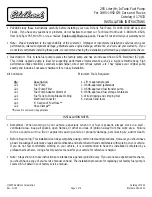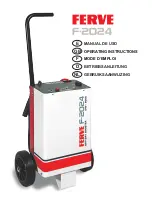
3. Apply the parking brake.
4. Fully open the fuel filler door.
5. Check the fuel tank filler valve for any
debris that may be restricting its
movement.
6. Remove any debris from the fuel tank
filler valve.
7.
Fully insert a fuel pump nozzle or the
fuel filler funnel provided with your
vehicle into the fuel filler pipe. See
125). This action should dislodge any
debris that may be preventing the fuel
tank filler valve from fully closing.
8. Remove the fuel pump nozzle or fuel
filler funnel from the fuel filler pipe.
9. Fully close the fuel filler door.
If this action corrects the problem the
message may not immediately reset. If the
message remains and a warning lamp
illuminates, have your vehicle checked as
soon as possible.
FUEL CONSUMPTION
we derive CO2 and fuel consumption
figures in laboratory tests according to
regulation (EC) 715/2007 or CR (EC)
692/20058 and subsequent amendments
They are intended as a comparison
between makes and models of vehicles.
They are not intended to represent the real
world fuel consumption you may get from
your vehicle.
Real world fuel consumption is governed
by many factors, for example driving style,
high speed driving, stop-start driving, air
conditioning usage, add-on accessories,
payload and towing.
Note:
The amount of fuel in the empty
reserve varies and should not be relied upon
to increase driving range.
Advertised Capacity
The advertised capacity is the maximum
amount of fuel that you can add to the fuel
tank after running out of fuel. Included in
the advertised capacity is an empty
reserve. The empty reserve is an
unspecified amount of fuel that remains
in the fuel tank when the fuel gauge
indicates empty.
Note:
The amount of fuel in the empty
reserve varies and should not be relied upon
to increase driving range.
Calculating Fuel Economy
The first 1,500 km of driving is the break-in
period of the engine. A more accurate
measurement is obtained after 3,000 km.
1.
Completely fill the fuel tank and record
the initial odometer reading. See
2. Each time you fill the fuel tank, record
the amount of fuel added.
3. After at least three fill ups, fill the fuel
tank and record the current odometer
reading.
4. Subtract your initial odometer reading
from the current odometer reading.
To calculate L/100 km (liters per 100
kilometers) fuel consumption, multiply the
liters used by 100, then divide by kilometers
traveled. To calculate MPG (miles per
gallon) fuel consumption, divide miles
traveled by gallons used.
Keep a record for at least one month and
record the type of driving, for example city
or highway. This provides an accurate
estimate of your vehicle’s fuel economy
under current driving conditions. Keeping
records during summer and winter shows
how temperature impacts fuel economy.
129
Endura (CDQ) New Zealand, enNZL, Edition date: 201712, First Printing
Fuel and Refueling
Содержание ENDURA 2017
Страница 1: ...FORD ENDURA Owner s Manual...
Страница 3: ......
Страница 9: ...6 Endura CDQ New Zealand enNZL Edition date 201712 First Printing...
Страница 325: ...Van E239122 Truck E239121 322 Endura CDQ New Zealand enNZL Edition date 201712 First Printing Appendices...
Страница 353: ...350 Endura CDQ New Zealand enNZL Edition date 201712 First Printing...
Страница 364: ...January 2018 First Printing JT4J 19A321 ZDA...
















































